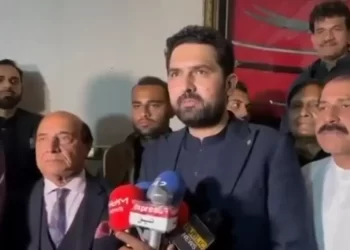Days after Israel announced a daily pause in fighting on a key route to allow more aid into Gaza, chaos in the besieged Palestinian territory has left vital supplies piled up and undistributed in the searing summer heat.
More than eight months of war have led to dire humanitarian conditions in the Gaza Strip and repeated UN warnings of famine.
Desperation among Gaza’s 2.4 million population has increased as fighting rages, sparking warnings from agencies that they are unable to deliver aid.
“The breakdown of public order and safety is increasingly endangering humanitarian workers and operations in Gaza,” the United Nations Office for the Coordination of Humanitarian Affairs, OCHA, said in a briefing late on Friday.
“Alongside the fighting, criminal activities and the risk of theft and robbery has effectively prevented humanitarian access to critical locations.” But Israel says it has allowed hundreds of trucks of aid into southern Gaza, trading blame with the United Nations over why the aid is stacking up.
The blame game
With civil order breaking down in Gaza, the UN says it has been unable to pick up any supplies from Kerem Shalom since Tuesday, leaving crucial aid in limbo.
A deputy UN spokesman this week said the crossing “is operating with limited functionality, including because of fighting in the area.”
William Schomburg, International Committee of the Red Cross chief in Rafah, said arranging lorries from the Egyptian side in particular was complicated.
“It’s not just a question of civil order, but also the fact that you often have to cross battlefields,” he said in an online briefing, adding that the area near Kerem Shalom had been hostile.
“There were even rockets fired nearby. So this whole area is particularly complicated to navigate for reasons linked to the hostilities and for reasons linked to general security.”
Israel’s coordinator for civilian affairs in the Palestinian territories, known as COGAT, said on Thursday “the content of 1,200 aid trucks awaits collection by UN aid agencies,” saying a lack of distribution was responsible.
Earlier in the week, COGAT spokesman Shimon Freedman told reporters at the crossing the daily pause on a southern road into Gaza was designed to allow the UN “to collect and distribute more aid” alongside an Israeli military presence.
He said most of the aid had not moved because “organisations have not taken sufficient steps to improve their distribution capacity.”
‘Don’t see any aid’
Aid agencies have instead pointed to Israel’s offensive on the southern city of Rafah, which pushed out more than a million people and closed a border crossing with Egypt, as a deepening humanitarian crisis hampered relief efforts. Schomburg described Rafah City as a “ghost town.”
“It is a ghost town in the sense that you see very few people, high levels of destruction, and really just another symbol of the unfolding tragedy that has become Gaza over the last nine months,” he said.
The UN food agency has said its aid convoys have been looted inside Gaza by “desperate people”.
As both sides stall, it is the civilians in Gaza who are paying the price.
“We don’t see any aid. Everything we get to eat comes from our own money and it’s all very expensive,” said Umm Mohammad Zamlat, 66, from northern Gaza but now living in Khan Yunis in the south.
“Even agencies specialised in aid deliveries are not able to provide anything to us,” she added.








